What is Turner Syndrome and Why Does it Affect Only Females?
Turner syndrome occurs only in females and is caused by structural defects or
incomplete X-chromosomes. When one of the two X-chromosomes present in a female
embryo is missing, defective, or has deleted portions then Turner syndrome may
develop.
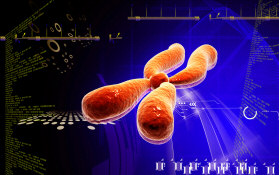 Chromosomal disorders can occur when there is change in the number or
structural composition of chromosomes, resulting in abnormalities. Turner syndrome is a condition that only affects females and does not
occur in males. It is estimated that about 60,000 females in the US are affected
by Turner syndrome, with close to 800 new cases of the disorder being diagnosed
each year. This condition is witnessed in 1 out of every 2000 to 2500 newborn
babies. Turner syndrome is mostly detected at birth but at other times, it can
remain undiagnosed until the girl reaches puberty. Typically a failure to
grow breasts can be indicative of Turner syndrome and the condition is most
accurately diagnosed during puberty when patients do not develop in a typical
fashion. Chromosomal disorders can occur when there is change in the number or
structural composition of chromosomes, resulting in abnormalities. Turner syndrome is a condition that only affects females and does not
occur in males. It is estimated that about 60,000 females in the US are affected
by Turner syndrome, with close to 800 new cases of the disorder being diagnosed
each year. This condition is witnessed in 1 out of every 2000 to 2500 newborn
babies. Turner syndrome is mostly detected at birth but at other times, it can
remain undiagnosed until the girl reaches puberty. Typically a failure to
grow breasts can be indicative of Turner syndrome and the condition is most
accurately diagnosed during puberty when patients do not develop in a typical
fashion.
What is Turner Syndrome?
Turner syndrome is a chromosomal condition caused by incomplete X-chromosomes or
the missing of one of the two X chromosomes. A person who suffers from this
condition will develop as a female. Chromosomes are body structures, which hold
genes, and there are 23 pairs of these chromosomes in a normal person. Due to
certain disorders the number may differ from a normal person which can cause
some genetic abnormalities.
Chromosomes are found in the nucleus of every cell in the body. These
chromosomes are passed from the parents to a child where the mother donates 23
chromosomes, called the maternal chromosomes which are located in the egg. The father
also passes another 23 chromosomes, known as the paternal chromosomes, and these
are found in the sperm.

In these chromosomes, there are genes, which are sets of instructions that
tell the body how it should develop and function. These genes also determine
medical and physical characteristics like blood type, hair color, susceptibility
to diseases, growth of sexual characters, and overall bodily development. Among
the 23 pairs of chromosomes the first 22 pairs are called autosomes, and the
final pair (23rd) is regarded as the sex chromosomes because they determine
sexual assignment.
Usually females have sex chromosomes referred to as XX chromosomes, and a
male has one X and one Y chromosome which are referred to as XY chromosomes.
When a female suffers from Turner syndrome, meaning that there is one missing or
incomplete X- chromosome, that individual develops problems with their sexual
development. Such a person has a shorter height and develops abnormalities in
sex characters. The X-chromosomes or sex chromosomes give instructions on how a
person should develop, that is, male or female. They also help in the overall
development and growth of the body.
How Does Turner Syndrome Occur?
When one normal X-chromosome is found in cells of a female and the other
X-chromosome is missing or has been structurally altered, this may lead to
Turner syndrome. This change in the sex chromosomes happens before an egg fuses
with a sperm during the process of fertilization. However, the abnormality in
the chromosomes is not passed from the parent to a child. It occurs somewhere
just before the formation of an embryo.
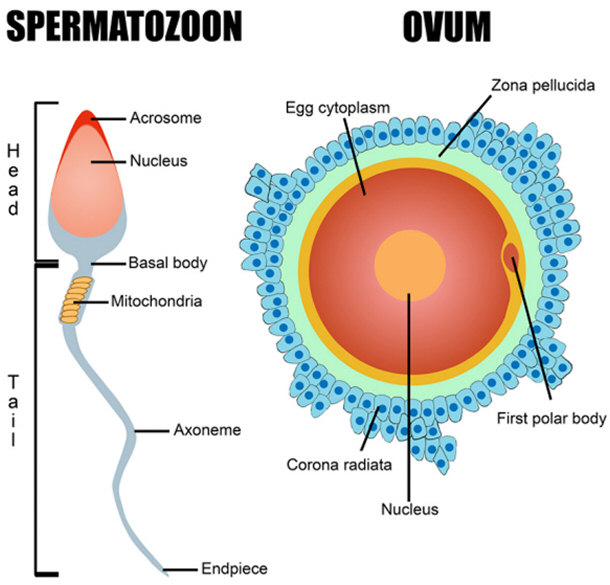
Due to the missing genetic material, a female with this condition suffers
from growth and development problem before and after birth. This leads to a
shorter stature, malfunction of ovaries as well as other features associated
with Turner syndrome. The abnormality in sex chromosomes in females, which
results to Turner syndrome may be caused by an error in cell division in a
process known as nondisjunction. The results of nondisjunction are an abnormal
number of X-chromosomes.
A reproductive cell could by chance, lose one copy of the sex or the XX
chromosomes resulting in only one X-chromosome for a female. In the case of a
nondisjunction situation, two sex chromosomes may not divide or separate during
the formation of an egg. That abnormal egg fuses with a normal sperm and forms
an embryo, which could have one missing X-chromosome.
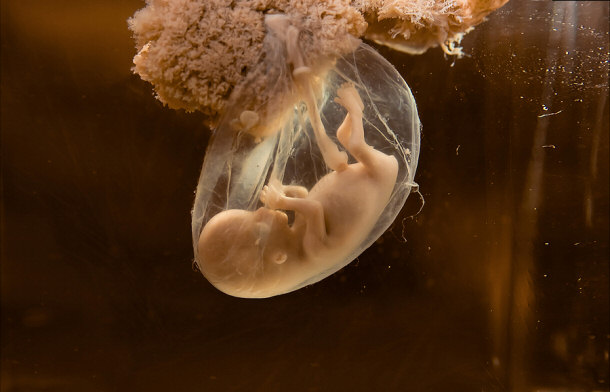
When an embryo is formed that way, it grows and its cells begin to divide.
Every cell the fetus grows with a missing X-chromosome. In other cases, Turner
syndrome can occur due to chromosomal changes in some and not all of the cells
which is referred to as mosaicism. It is estimated that about half of the people
who suffer from Turner syndrome have each cell in the body with only one copy of
the X-chromosome, rather than the usual two X or sex chromosomes. However, in
mosaicism, only some and not the entire number of cells in body have a change in
sex chromosomes. Some of the cells in body have the usual sex chromosomes, which
could be the XX or the XY and the other cells have only one copy of the
X-chromosome.
What Causes Turner Syndrome
Loss of genetic material within one of the two sex chromosomes is believed to be
the cause of Turner syndrome. This change in sex chromosomes can happen through
processes such as monosomy, mosaicism or genetic defects. X-chromosome monosomy
occurs during fertilization. This means that an embryo, which receives one
X-chromosome, will develop into a female who suffers from Turner syndrome.
However, an embryo, which receives one Y chromosome and no X-chromosome, does
not survive and therefore a fetus does not continue to grow.
The X-chromosome mosaicism is another theory, which tries to explain how
Turner syndrome may occur. In mosaicism, a sex chromosome is lost in the early
phases of the development of an embryo. What happens is that only some cells of
the growing embryo have one X-chromosome, while the other cells have normal two
X-chromosomes. If only a few cells have these abnormalities, then the Turner
syndrome symptoms in that particular patient are mild and less severe.
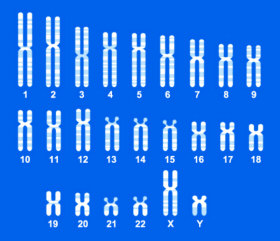 The other theory, which explains the cause of Turner syndrome, is a
X-chromosome defect in which there is a deformity on the chromosome but not a
complete loss. One of the two X-chromosomes may have some portion deleted,
fragmented, or some other structurally related changes like ring formation. When
these defects occur in one of the sex chromosomes, they prevent the normal
expression of genes within the X-chromosomes. This is something that results in
problems with defining sex characteristics and growth. The severity of the Turner syndrome arising from X-chromosome defect can vary
widely depending on how and when the deformations occurred. If large portions of
one X-chromosome are deleted or fragmented, this can result in various symptoms
such as failure of the ovarian function and problem with height development.
Small defects can result in a single symptom like a short stature and no other
sexual reproductive problems. The other theory, which explains the cause of Turner syndrome, is a
X-chromosome defect in which there is a deformity on the chromosome but not a
complete loss. One of the two X-chromosomes may have some portion deleted,
fragmented, or some other structurally related changes like ring formation. When
these defects occur in one of the sex chromosomes, they prevent the normal
expression of genes within the X-chromosomes. This is something that results in
problems with defining sex characteristics and growth. The severity of the Turner syndrome arising from X-chromosome defect can vary
widely depending on how and when the deformations occurred. If large portions of
one X-chromosome are deleted or fragmented, this can result in various symptoms
such as failure of the ovarian function and problem with height development.
Small defects can result in a single symptom like a short stature and no other
sexual reproductive problems.
It is not uncommon for abnormal X-chromosomes to be lost during the process
of cell division when the eggs and sperms are fusing to form an embryo. This
process is known as embryogenesis. If the defect involves a ring structural
formation in the X-chromosome, the effects could be much worse. The reason is
because, such a ringed X-chromosome leads to absence of essential genes as well
as deleterious expression of genes in X-chromosomes, which may remain inactive
or silent in the second X-chromosome.
Thus, if the second X-chromosome is also affected, it means that the Turner
syndrome symptoms become more severe. In a nutshell, X-chromosome monosomy,
mosaicism, and defects are three possible causes of Turner syndrome. They may
cause varying symptoms in a female depending on which part of the chromosome and
genes are affected.
Why Do Girls and Women Suffer From Turner Syndrome and Not
Males?
The reason is that if in the process of embryo formation there is loss of
X-chromosome from the XY sex chromosomes, which are present in a male fetus,
usually the fetus does not survive. However, if one of the two X-chromosomes
found in females is deleted, fragmented, or defective, the fetus may survive but
go on to develop Turner syndrome.
When an embryo receives only the Y-chromosome and does not have the
X-chromosome, the fetus is not able to survive. A female fetus can survive with
one X-chromosome instead of the normal two XX chromosomes. The X-chromosome
consists of a longer DNA molecule and has many genes that are required for
cellular function. In the event that one X-chromosome misses in a normal female
fetus, it means that the other one X-chromosome left can provide many of the
genes needed for cell functionality. This is why a female foetus with only one
X-chromosome will survive but with some abnormalities associated with Turner
syndrome.
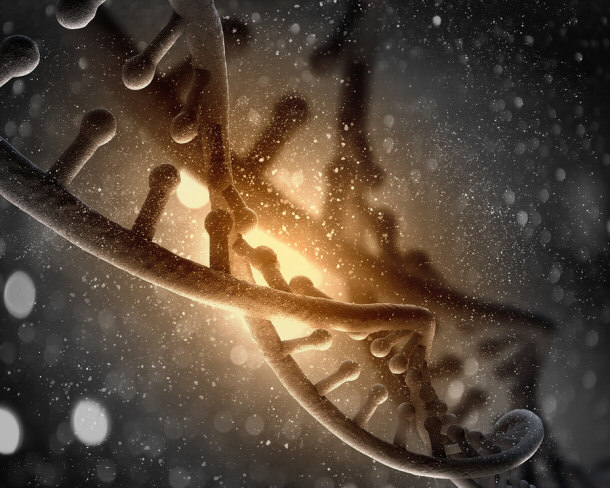
On the other hand, Y-chromosome consists of fewer genes required for cell
function. A missing X-chromosome is much worse than a missing Y-chromosome.
Therefore, if a male fetus that is supposed to have XY chromosomes does not have
the X-chromosome; it cannot survive with the only remaining Y-chromosome since
this chromosome cannot support the essential cell functions required to sustain
life. It will therefore not develop. This is the reason why abnormalities in
X-chromosomes only allow a female fetus to grow and the male fetus are not
viable and shortly die off. In short, all patients with Turner syndrome are
females.
The Symptoms of Turner Syndrome
Symptoms of Turner syndrome will vary depending on the chromosomal changes, the
causes, and the genes that are affected. Turner syndrome causes abnormalities in
sex development and the overall growth of the body. One of the common symptoms
is short stature where a girl grows shorter than normal and lack of breast
development.
The failure in puberty development is caused by malfunctioning ovaries. The
ovaries are responsible for production of eggs, and sex hormones like estrogen
and progesterone. Below is a human ovary-
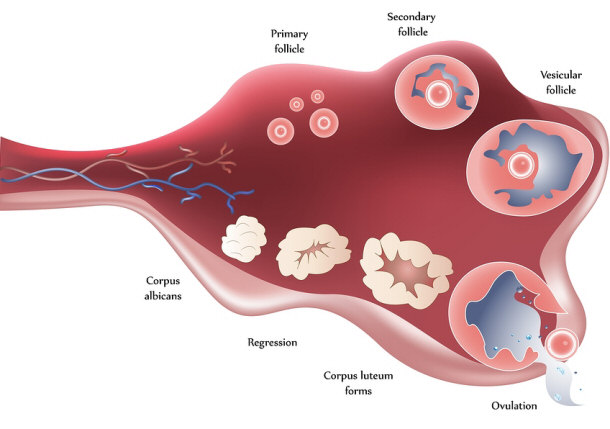
If there are problems with the ovaries, it means that the
hormones that are responsible for triggering the onset of puberty are not
produced. Women with Turner syndrome are not able to conceive because they are
infertile. A female with this condition may have a webbed neck in which the
areas on top part of shoulders, all the way extending to the sides of neck,
develop extra folds of skin.
Moreover, the back of the neck has a low hairline or the hair extends down
the neck. Women who suffer from Turner syndrome could have a stocky appearance.
Abnormal bone development may be seen around the arms, which turn out
considerably at the elbow in Turner patients. Other signs may include drooping
eyelids and a lower jaw that is moving back or receding. The ears may also be
shaped differently. In addition, they may be unusually set on lower sides of the
head.
 Because
of changes in body functionality caused by the alterations in genes, other
symptoms may occur such as swelling of feet and hands, as well as extra fluid in
the feet and hands or edema. High blood pressure, defects in heart and kidney,
thyroid problems, diabetes, being overweight, and hearing problems may be
experienced in girls who suffer from Turner syndrome. As a result of problems in
growth and sex character development, girls may experience emotional problems.
The short stature appearance of a girl may cause problems with
self-esteem such as self-denial. Because
of changes in body functionality caused by the alterations in genes, other
symptoms may occur such as swelling of feet and hands, as well as extra fluid in
the feet and hands or edema. High blood pressure, defects in heart and kidney,
thyroid problems, diabetes, being overweight, and hearing problems may be
experienced in girls who suffer from Turner syndrome. As a result of problems in
growth and sex character development, girls may experience emotional problems.
The short stature appearance of a girl may cause problems with
self-esteem such as self-denial.
How is Turner syndrome treated?
Apparently, there is no specific cure for Turner syndrome since the chromosomal
changes cannot be corrected once they have occurred. However, the symptoms,
which arise from this condition, can be managed. Depending on the cause and the
extent of chromosomal changes, different symptoms may occur. Turner syndrome
treatment is aimed at managing the symptoms.
Since the condition affects the development of the ovaries that cause
problems in the synthesis of hormones responsible for regulation of menstruation
and growth of breasts, it means that girls with this disorder do not go through
the puberty stage as desired. Oestrogen replacement may be applied to assist a
girl to develop the physical changes witnessed in puberty stage such as
menstrual periods and breast development. There has been a decent amount
of success with hormone replacement therapy for Turner syndrome patients in
addition to success in treating other conditions like menopause.
Similarly, if the condition causes short stature, growth hormones may be
administered to help a girl reach an average adult height. When growth hormone
treatment is started early, it could help a girl attain an average height rather
than the short height. Turner syndrome causes infertility or inability to have
child but this problem can be corrected with the use of artificial fertilization
of an egg.
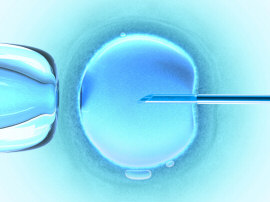 Through a technique known as in vitro fertilization, some women suffering
from Turner syndrome can get pregnant. Usually an egg obtained from a donor is
used in creating an embryo, which is then implanted into the womb of a woman
with suffering from Turner syndrome. In such a case, the women is able to carry
and deliver a baby in the normal way. It is advisable that if a girl suffers
from Turner syndrome, she seeks the help of professional therapists who can
assist in restoring her lost self-esteem and balance out any emotional issues. Through a technique known as in vitro fertilization, some women suffering
from Turner syndrome can get pregnant. Usually an egg obtained from a donor is
used in creating an embryo, which is then implanted into the womb of a woman
with suffering from Turner syndrome. In such a case, the women is able to carry
and deliver a baby in the normal way. It is advisable that if a girl suffers
from Turner syndrome, she seeks the help of professional therapists who can
assist in restoring her lost self-esteem and balance out any emotional issues.
Conclusion
Turner syndrome is a chromosomal condition that only affects females and does
not occur in males. No males are born with the condition because in the first
place, a male fetus that misses the X-chromosome linked with the condition does
not survive. Turner syndrome is genetic but it usually is not passed from the
parent to children meaning that it does not run in families. The abnormality
occurs somewhere before the egg fuses with the sperm to form the embryo that
develops into a fetus. Nonetheless, there is one very rare exception where
X-chromosome deletion can occur and remain sufficiently stable to be passed to
the next generations. In such a case, the deletion takes place in such a way
that it allows fertility to remain and the woman can bear a child.
Diseases & Conditions
Top Lists:
Top 10 Most Common Genetic Disorders
Top 15 Most Disturbing Skin Conditions
10 Unusual Phobias
Informational:
Diverticular Disease and Diverticulitis
What is Turner Syndrome and Why Does it Affect Only Females?
Alice in Wonderland Syndrome and How to Treat the Symptoms
Herniated Disc: Symptoms and Treatments
Pinch Nerve: The Cause of Remote Pain
Dealing With a Child Who Has a Fever
How Unhealthy Diet Could Trigger Inflammatory Arthritis
Phobias: Understanding How They Develop and Treatments
Depression Facts, Symptoms & Treatment
Earaches - Causes and Treatments
Symptoms of Borderline Personality Disorder and How to Deal with It
Seasonal Affective Disorder: Does Light Therapy Help?
What Really Causes Dandruff and How Can You Treat the Symptoms
Treating Plantar Fasciitis or Heel and Arch Pain
Symptoms and Treatments of Aplastic Anemia
Using Sclerotherapy to Get Rid of Varicose Veins
Are the Side Effects of HGH Supplements Worth It?
ADD/ADHD Symptoms and Treatment
What are the Options for Hair Loss Treatments
Options for Frontal Hair Loss Treatment |